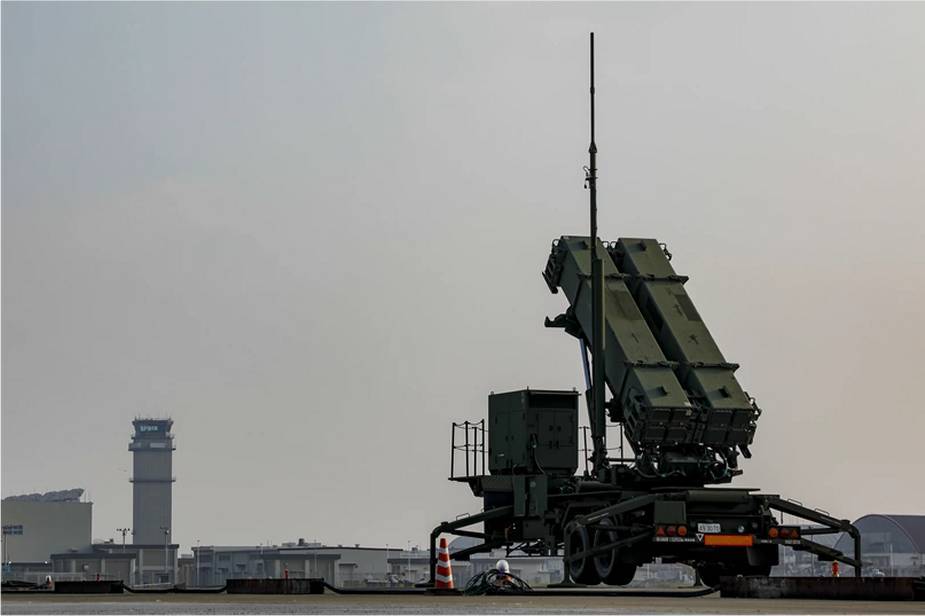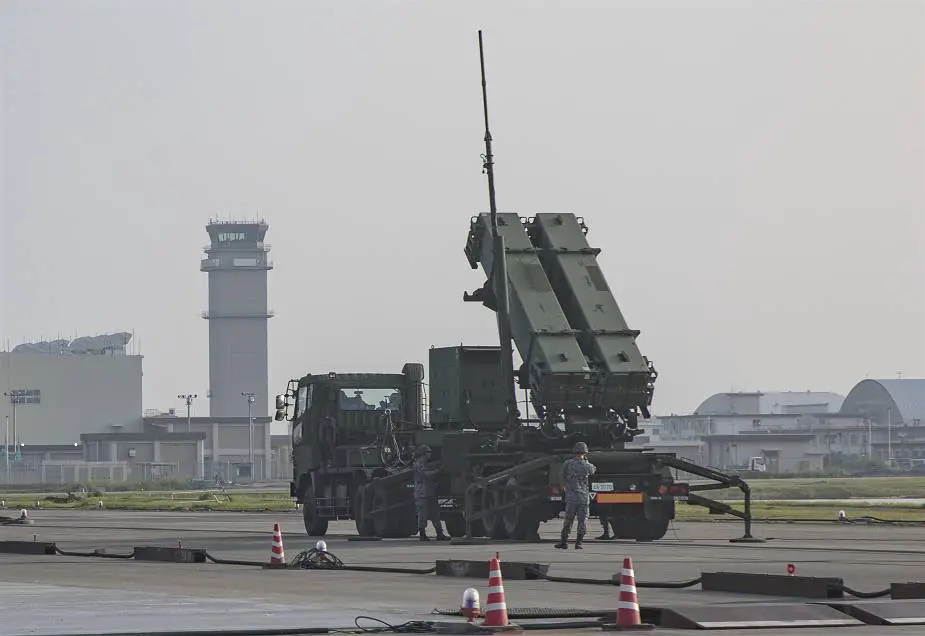Breaking news
Japan to deploy Patriot PAC-3 missile in Okinawa amid potential North Korean missile threat.
In a report published by "The Japan Times" on April 24, 2023, Japan plans to station the Patriot Advanced Capability-3 (PAC-3) surface-to-air missile defense system on two islands in Okinawa Prefecture in anticipation of a potential North Korean ballistic missile launch. Chief Cabinet Secretary Hirokazu Matsuno confirmed the decision on Monday, April 24, 2023.
Follow Army Recognition on Google News at this link

Service members with the Japan Air Self-Defense Force (JASDF) 2nd Air Defense Missile Group, set up the MIM-104 Patriot missile system during Patriot Advanced Capability-3 (PAC-3) deployment training at Marine Corps Air Station Iwakuni, Japan, Aug. 29, 2017. (Picture source U.S. DoD)
The PAC-3 system will be set up at Ground Self-Defense Force camps on Ishigaki and Yonaguni islands, with local government agreements already in place, as per Matsuno.
North Korea announced on April 19, 2023, that Kim Jong Un had ordered the launch of the nation's first military reconnaissance satellite as planned. This announcement raised concerns about a possible long-range ballistic missile launch disguised as a satellite launch.
In response, Defense Minister Yasukazu Hamada instructed the Japanese Self-Defense Forces to prepare to intercept any object that may threaten Japan's territory. Although four PAC-3 systems are already in place on Okinawa's main island, none exist on the Sakishima Islands, which include Ishigaki and Yonaguni islands.
Hamada's directive will also involve deploying Maritime Self-Defense Force Aegis destroyers equipped with Standard Missile-3 interceptors in the waters around Japan. A Japanese army combat unit has been alos deployed in Okinawa to minimize potential damage from falling rocket debris.
The interception preparations in the Okinawa area have been made based on past instances of North Korea launching long-range rockets, claiming to carry satellites, over the prefecture.

The Patriot PAC-3 air defense missile system is an upgrade to the earlier Patriot and has been operational since the late 1990s. (Picture U.S. DoD)
At present, Japan's defense forces have six air defense units in service, equipped with 24 Surface-to-Air Missile (SAM) batteries, including the M902 Patriot PAC-3.
The Patriot Advanced Capability-3 (PAC-3) is a sophisticated surface-to-air missile (SAM) defense system designed to intercept and neutralize short to medium-range ballistic missiles, cruise missiles, and advanced aircraft. Developed by the U.S. defense contractor Raytheon (now part of Lockheed Martin), the PAC-3 is an upgrade to the earlier Patriot missile systems and has been operational since the late 1990s.
The PAC-3 system employs a hit-to-kill approach, meaning it directly collides with its target to destroy it, rather than relying on a proximity detonation. This technique enhances the system's effectiveness against threats, including those equipped with countermeasures or decoys.
The PAC-3 missile itself is significantly smaller and more agile than its predecessors, allowing for the deployment of 16 missiles in a single launcher, as opposed to four in the earlier models. This increased capacity enhances the defense coverage and the probability of intercepting multiple targets. The missile's range is classified; however, it is estimated to be around 20 to 35 kilometers (12 to 22 miles) for ballistic missile threats and up to 50 kilometers (31 miles) for aircraft and cruise missile targets.
The system's radar, the AN/MPQ-53 or AN/MPQ-65, is capable of tracking and identifying multiple targets simultaneously. Additionally, the radar can discriminate between actual threats and decoys. The PAC-3 system's command and control component, the Engagement Control Station (ECS), manages the system's operation and coordinates with other defense assets for a seamless response to threats. The radar's range is approximately 100 kilometers (62 miles), allowing it to effectively detect and track incoming threats.























